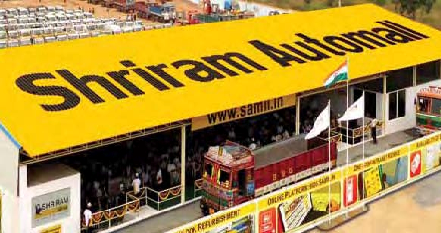 G.S. Sundararajan, group director, Shriram Group, provides insightful views on the relevance of a banking platform for the group as well as growth indicators in the MSME and the retail segments:
G.S. Sundararajan, group director, Shriram Group, provides insightful views on the relevance of a banking platform for the group as well as growth indicators in the MSME and the retail segments:
Reserve Bank of India is in the advance process of issuing new banking licenses. Some 26 applicants, ranging from public sector units and business conglomerates to microfinance institutions, have applied for licenses which are being awarded after more than a decade. Recently, Tata Sons withdrew its application. Finance Minister P Chidambaram has said that new banking licenses would be issued to applicants with innovative and different banking models. RBI has, in its just released annual ‘Trends and Progress of Banking in 2012-13’ report, made some significant remarks: “Many initiatives were undertaken in the sphere of regulatory and supervisory policies during the year. These include, amongst others, issuing guidelines for new bank licenses. At the present juncture, the key issues related to the Indian banking sector include, amongst others, a need to stimulate and foster competition in the banking sector and liberalize licensing policies. Regulators need to ensure that their regulatory stance does not create barriers to the entry or exit of institutions or result in unwarranted costs to the economy and consumers. Instead regulation should impose restrictions on institutions is such a way that it does not cause a moral hazard problem.”
Shriram Capital is one of the high profile applicants for bank license. It is the holding company for all financial services entities of the `60,000 crore Chennai-based Shriram group, including truck financier Shriram Transport. G.S.Sundararajan, group director, Shriram Group, and managing director, Shriram City Union Finance, is the designated owner for leading the banking initiative for the group which is one of the key value-enhancing forays for this financial conglomerate.
Mehul Dani: What are the growth drivers in various segments where you have substantial presence?
GS Sundararajan: Shriram City Union Finance has largely focused on the retail and MSME space. Our retail portfolio is largely concentrated in 2 wheeler and gold. In 2 wheeler segment within retail, we have registered a growth of 32%, largely because in the last 2 years we have opened up new geographies outside the southern states of the country. Our presence in Northern India is in over 100 branches predominantly engaged in retail business, thereby, contributing to the 2 wheeler growth as well. We have also registered 42% growth in MSME business, which largely came from outside of Andhra Pradesh markets. The state was hit by the Telangana agitation in last quarter, leading to problems of disbursal there; but that was compensated by businesses in north and west.
Despite the fact that our overall growth was flat, we have grown in these 2 sectors. We have lowered our presence in gold financing to about 25% of our total book. Since last September, we have been consciously dropping our gold portfolio, because we do not want finance against gold to be more than 25% of our total book. In the last 12 months, our gold loans have come down to 23% of our total book. Gold finance as a whole has come down by Rs3000 crore in the last one year. Shriram City’s profit after tax for the quarter ended September 2013 is `127 crore. Our target as a group is to achieve 20-25% CAGR in next 5-6 years.

How have the new markets in the north and west evolved in the short span?
Two and half years ago, 90% of our business used to come from South India, through Tamil Nadu, Andhra Pradesh, Karnataka and to some extent Maharashtra, which are our chit fund geographies. Shriram Group has been very popular in these states. What we did was, we leveraged on the brand equity of Shriram Chits and successfully graduated a good portion of our chit fund customers into our MSME business. In our efforts to foray the chit geographies, we opened 100 branches in north India and 40 branches in western India, in order to start gold loan, 2 wheelers and MSME finance. In the last two and half years, Shriram City has steadily grown in the non-chit geographies and we believed that these geographical segments will contribute atleast one third of the total business in the next 3 years. Moreover, two and half years of this solid foundation has helped us to partly compensate the loss arising out of Telengana stir. Even today Andhra Pradesh contributes to 40% of our total book. Although we got `200crore less in Q2, 2013-14 due to Telengana issue, we managed to get more than that from other territories. Strategically broad-basing our geographies but sticking to our customer base consisting of lower middle income group has augured well in sustaining Shriram City’s growth plans.
Have you undertaken any study before entering in new markets in terms of growth opportunities, viability, etc?
There is a clear indication from our 2 wheelers’ sales that there is enough potential for increasing sales financing for this segment. Our strength comes from our presence in tier 2 and 3 towns. We have replicated this go to market strategy in North India also. While we do have branches in cities like Ahmedabad, Delhi and Mumbai, we also have significant presence in the likes of Morbi and Gandhidham in tier 2 and 3 towns, which contribute significantly to our business. Absence of adequate credit availability in these places is an apparent fact. We do not need any study to reveal potential in these areas.
What has been your business philosophy over the years?
The reason for Shriram City’s existence is to provide credit services to the largely underserved MSME target market across the country. With this mission, we strive to gradually embed ourselves through our branch presence in the communities around the branch. We understand the finance needs of these communities and build our business model around a branch centric, community led relationship based approach.
How has the process of diversification unfolded for the group in last few years?
Shriram City started with 2 wheelers as well as MSMEs. We started gold as a product 4 years ago and we found gold business easy to do. Housing finance was started 2 years ago primarily to cater to that part of our customer base which left the Shriram Group because we were not offering this product.This business is done through a subsidiary of Shriram City. Our expansion plans are very strategic in nature with almost zero focus on short term benefits. All the expansions we have done till date always have risen of 2 to 3 decades and not 2-3 years.
Is that your market differentiator that will work in your favor?
Yes, it will always be. Whereas several chit fund businesses did badly, Shriram Chits has been highly successful and is the foundation of the Shriram Group brand equity. Shriram Transport specialized in financing pre-owned commercial vehicle which hitherto was seen to be the exclusive forte of the local money lenders. Shriram City specializes in providing credit to micro and small businesses that have never been served by the formal sector. Our ability to identify such segments and derive that appropriate value proposition has been Shriram Group’s distinctive competence so successfully demonstrated over the last several years. We do believe that if financial inclusion is the primary objective for the new bank licenses, our experience and expertise in this area will stand us in good state.
How do you contain NPAs?
Shriram City is a quaint essential community lender. Our understanding of the community and our ability to use surrogates to access credit worthiness has ensured very low levels of NPAs across all lines of businesses. We understand operational risk as relevant to our target market extremely well. Our 3 tiers of audit ensure adequate control to manage this risk.

How do you view and treat community for business purpose?
What we refer to as community is the community around our branch, people to whom our branch caters to say within 20-30 km area. Our branch manager is always in sync with what is happening in the community around him. He understands the customs and practices followed by that community so that he is able to correlate with them much better. 70% of our employees are recruited from the local community.
What are the plus and minus points that you find with the public and private banks?
If you keep SBI aside, I think all the other public sector banks exist for ages and their present social responsibilities are much more than commercial profitability. PSBs follow the mandate given to them for facilitating savings and credits, lending to farmers who are critical to the Indian economy. Private banks are more focused on commercial profitability. The element of ownership is quite weak in PSBs. There is little ownership of wanting to demonstrate the mandate given to you. There is a huge opportunity among PSBs to enhance efficiencies and build very successful and inclusive business model.
Private banks are bottom-line driven and also have significant FII investments in them. Secondly, they have exposure to global standards and global banks. They are also able to transfer some of the best practices here. Private banks have huge issue of employee attrition and a threat of operational risk adversely impacting them.
What is the level of Shriram Group’s preparedness for banking business, if you are given the license?
We want to get into banking to further the financial inclusion agenda our group has had. If you look at several NBFCs of other groups, I don’t think there is any single group which is focused only on serving the unserved or underserved and still has proved that to be a sustainable business model over several years. Shriram Group has done this consistently through the last 4 decades. A banking license, we believe, will enable us to offer banking products through our existing customers and also expand our presence in the underserved target market. Our demonstrated expertise in successfully lending to the lower economic strata will certainly facilitate our banking foray if and when it happens.
What would a bank license mean to you, if granted?
Banking platform will be meaningful to the Shriram Group if and only we are allowed to further our financial inclusion agenda as we have been doing for the last 4 decades.
RBI has said that NBFCs may get priority over others for banking license.
NBFCs understand lending, NBFCs understand financial service on savings and credit much better than anybody else. They have got experience in taking risks. Preference for NBFCs is the best thing to happen. Having said that, banking will be a difficult business for NBFCs because their experience is only in lending. Several other elements of a banking business are alien to them; there will be significant challenges for any NBFC to become a bank. Upfront understanding of these challenges and proactively building the necessary skill sets to surmount these challenges will be key to any NBFC’s success as a bank.







